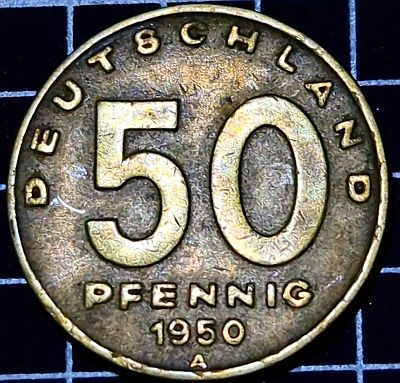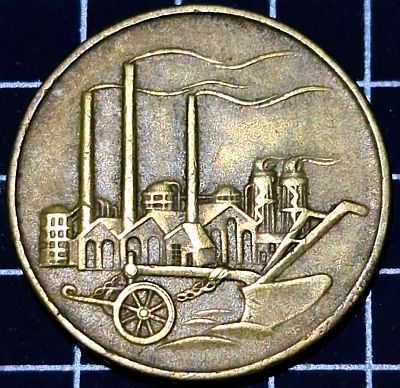An evocative industrious scene in a Socialist Democracy
Deutsche Demokratische Republik
The Deutsche Demokratische Republik (DDR), or English German Democratic Republic (GDR), also called East Germany. This was a socialist nation, formed in 1949 after the division of Germany. After WWII, the occupying allied forces and Soviet Union didn’t originally intend to partition Germany into separate countries. Events in Soviet-occupied eastern Germany placed it on a path of separate development. In April 1946, a pro-Soviet group formed the Socialist Unity Party (Sozialistische Einheitspartei Deutschlands, or SED). With the backing of Soviet military authorities, the SED came to dominate the political landscape in eastern Germany. Events like the Berlin blockade of 1947-48 contributed to the widening gulf between the Allied and Soviet zones. These divisions culminated with the formation of an independent nation, the German Democratic Republic (GDR), on October 7th, 1949. The Allies refused to recognise this new nation or its socialist government. The world, however, came to know it as East Germany.
The other part of Germany became The Federal Republic of Germany, also known as West Germany. West Germany was allied with the U.S., the U.K. and France and became a western capitalist country with a market economy. In contrast, East Germany was allied with the Soviet Union and fell under highly centralized communist rule.
Socialism or Communism?
East Germany has been described as Socialist, and Communist. Perhaps Wikipedia puts it most succinctly: East Germany was generally viewed as a communist state and described itself as a socialist “workers’ and peasants’ state”. While very similar, the key differences are around freedoms – under socialism, individuals can still own property. But industrial production, or the chief means of generating wealth, is communally owned and managed by a democratically elected government. Under communism, there is no such thing as private property. All property is communally owned, and each person receives a portion based on what they need. A strong central government—the state—controls all aspects of economic production, and provides citizens with their basic necessities, including food, housing, medical care and education.
East and West Germany were reunified in October 1990.
Obverse

The obverse has the country name (DEUTSCHLAND or Germany), the value, 50 PFENNIG, the year and the mintmark. 67 million coins were minted in 1950. There are believed to be some 1949 dated coins, which are quite possibly patterns. The mintmark is A. Germany used six letters to denote the mintmark:
A Berlin, since 1280
D Munich, since 1158
E Muldenhütten, 1887 – 1953
F Stuttgart, since 1374
G Karlsruhe, since 1827
J Hamburgische Münze since 801
Most of these were in West Germany. The Berlin mint and Muldenhütten were both in East Germany.
Reverse

The reverse of the coin contains a scene of industrious production – factories in the background, with a plough from a farm in the foreground. Scenes such as this were common on coins from socialist and communist countries. And, as I like to note, this side is Anepigraphic. After 1950, there was a gap, with the next 50 Pfennig coin being produced in 1958. That 50 Pfennig coin was aluminium rather than Aluminum-Bronze as this one. That coin contained the state emblem of the GDR (which was not adopted until 1955). The later coin was issued through until 1990.
Heads or Tails?
On the piece I wrote before this, I made a point of finding definitions for obverse (heads) and reverse (tails). So it’s interesting, that on this coin, it already isn’t 100% clear. To me at least – if it is to you, please let me know! Looking purely at this coin, I would have said that the side with the country name on it is the obverse – it’s the most identifying feature of the issuer. But looking at that Wikipedia definition which goes on to say “the side that is more typical of a wide range of coins from that location will be called the obverse”.

Looking at the first issue of GDR coins from 1949-1950, (1 Pfennig shown, image from Numista). Aside from this one, the 1, 5 and 10 Pfennig coins all have an image of a cog and wheat sheaf with the year on one side, and the country and value on the other. So possibly the cog / wheat sheaf side would be more typical…. but this one has a completely different image (albeit still of industry & farming). So, which do you think is the obverse and reverse of these?


Leave a Reply